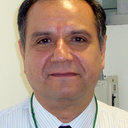[Lipid profile in household contacts of patients with pulmonary tuberculosis].
Słowa kluczowe
Abstrakcyjny
BACKGROUND
we have recently published the hypothesis that hypocholesterolemia might be a risk factor for the development of pulmonary tuberculosis. In this sense, albeit patients with pulmonary tuberculosis often have total cholesterol levels lower than the general population, it is not known if the latter have had a recent exposure to Mycobacterium tuberculosis.
OBJECTIVE
to evaluate serum lipids in subjects exposed to mycobacteria.
METHODS
we studied 25 pulmonary tuberculosis patients and 44 household contacts, and compared their serum lipid profile.
RESULTS
We found that total cholesterol, LDL and triglycerides concentrations increased with age in contacts but not in pulmonary tuberculosis patients, with statistically significant differences in regression lines (age versus lipid level). Multiple linear regression analysis confirmed that being a household contact was associated with higher levels of total cholesterol, LDL, HDL and triglycerides.
CONCLUSIONS
We conclude that lipid profile differed between pulmonary tuberculosis patients and their household contacts, thus supporting that low cholesterol levels might be a risk factor for developing pulmonary tuberculosis.


